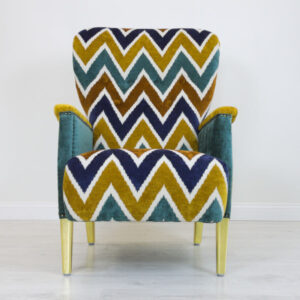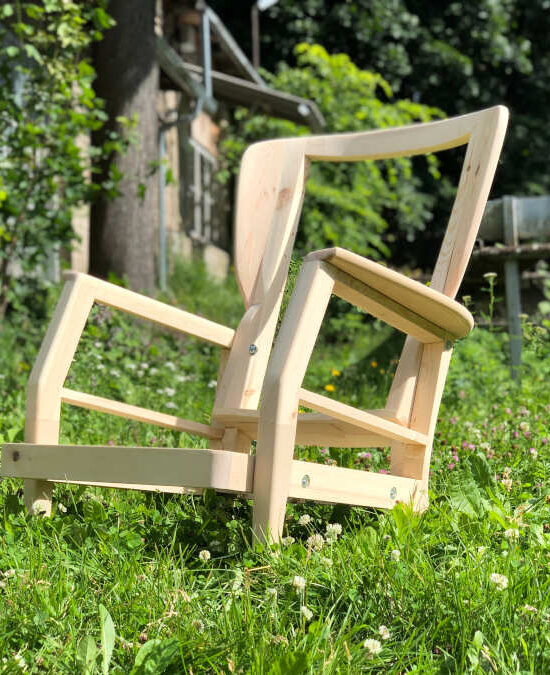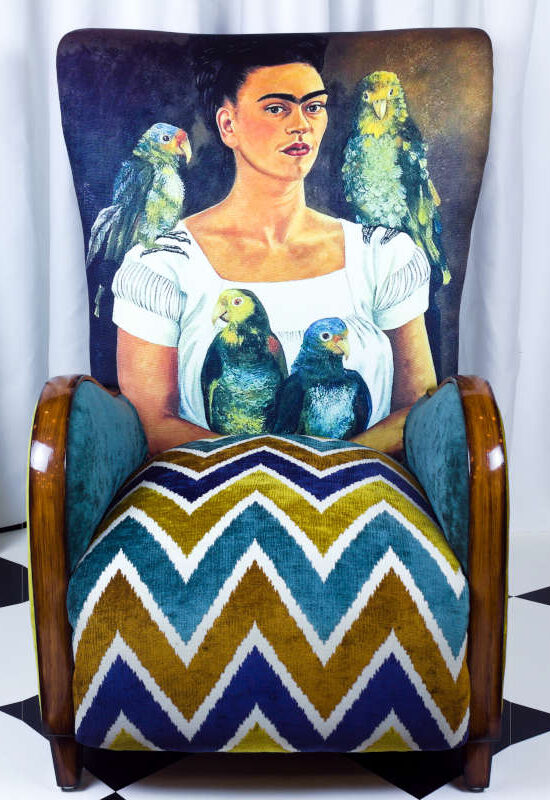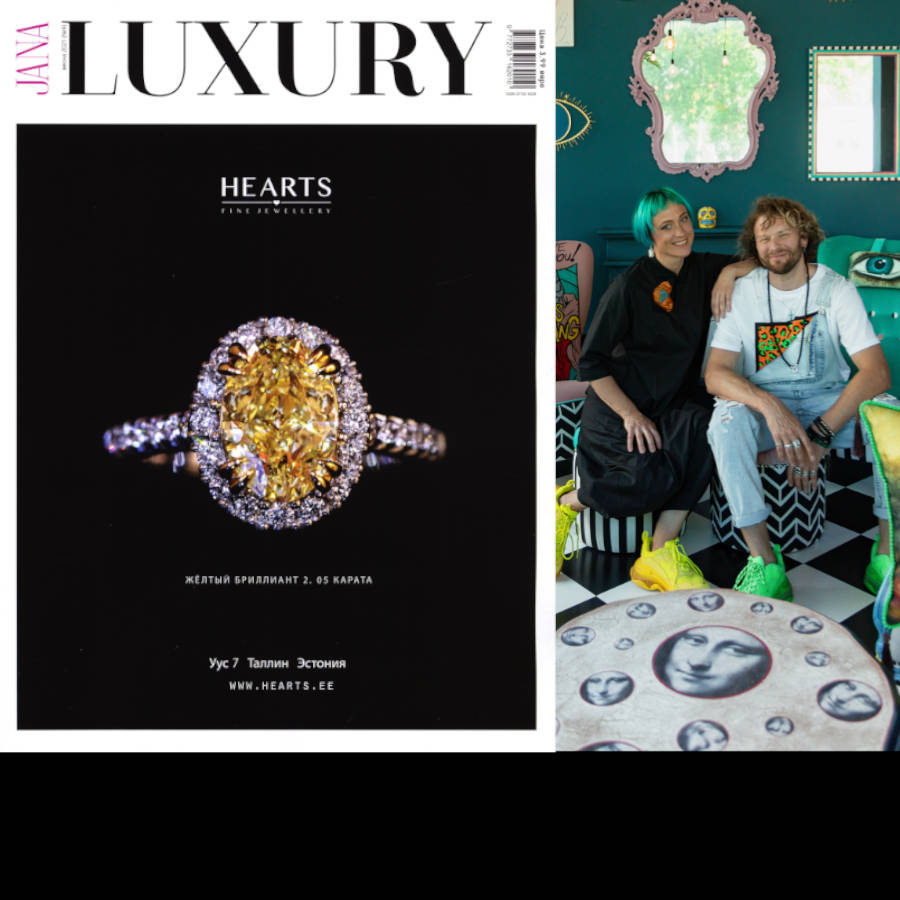
There are never too many colors!
Paradise Garden for inspiration, or there are never too many colors!
Interview for Jana Luxury Magazine
Every piece here draws attention of the eye: a chair, an armchair, a table, a chest of drawers, a lamp, a mirror or a pillow – everything is bright, unusual, they are real art objects, each can turn into a detail that is able to transform interior. However, it’s also possible to have all of them at once in one interior…

TEXT: EVGENIYA GORSKI PHOTOS: Konstantin Tatar & Color Life
The furniture and interior designer salon Color Life of Natalja and Janek Eljas began with the hobby of a successful interior designer: several years ago Natalja decided that she would do whatever she wanted with her own hands – and joined a restoration course. Now everything here is completely author’s art object and Natalja would engage in a restoration of a family heirloom or of a successful find on the antique market only if no conditions are set personally to her – her fantastic works are born only in the free flight of creativity!
On why many do not want to leave the salon and how to decorate the house of your dreams where you feel good in every way and whether there are any trends in this, about all this we talk today with Natalja Eljas.
– Natalja, you are making both completely new furniture, reviving family heirlooms using classical traditional methods exclusively and traditional materials?
– Yes, we are. And we make furniture from solid wood with horsehair or seaweed filling, just because we really, really like it. My husband makes the frames for new things himself: he has a separate workshop. It is important for us that everything is durable and eco-friendly.
– Does anybody else in Estonia still make furniture the way you do?
– Honestly, I do not know. Modern furniture is all rectangular, we have furniture with rounded lines. This is a difficult job; we once wanted to find a partner who would help us, but everyone refused to, they said it was too much of a headache that it was not worth the trouble – too time-consuming and difficult.
– Are all these breathtakingly beautiful bright prints your work from the start?
– Yes, some of them I paint directly on fabric or wood. Others I do on the computer: I digitalize my painting and add graphics. Another part is the masterpieces of famous artists: the world art, which is in the public domain. Contemporary art, of course, is often patented.
I do not patent my own drawings personally. That is a complicated and expensive procedure; it is a thing really only for very large firms, major world designers. There were times when I worried whenever I noticed my ideas being used by some other restorer. And now, on the contrary, I’m happy: it’s wonderful that they are inspired by my work, and they want to do something similar.
I have so many ideas that it seems to me that my life is not enough to realize them all. Therefore, there is no point in wasting time worrying that you are being copied. That way you just lose your energy and have neither time nor opportunities to create.
Practical naturalness
– What kind of paints is that you have on the shelves next to the furniture?
– They are chalk paints. Our message is to make this world kinder. Wood is eternal: it lives for 400 years and at the end it can be disposed of – by as simple as heating a fireplace with it, without harm for environment. Therefore, we chose chalk paints: they are absolutely natural.
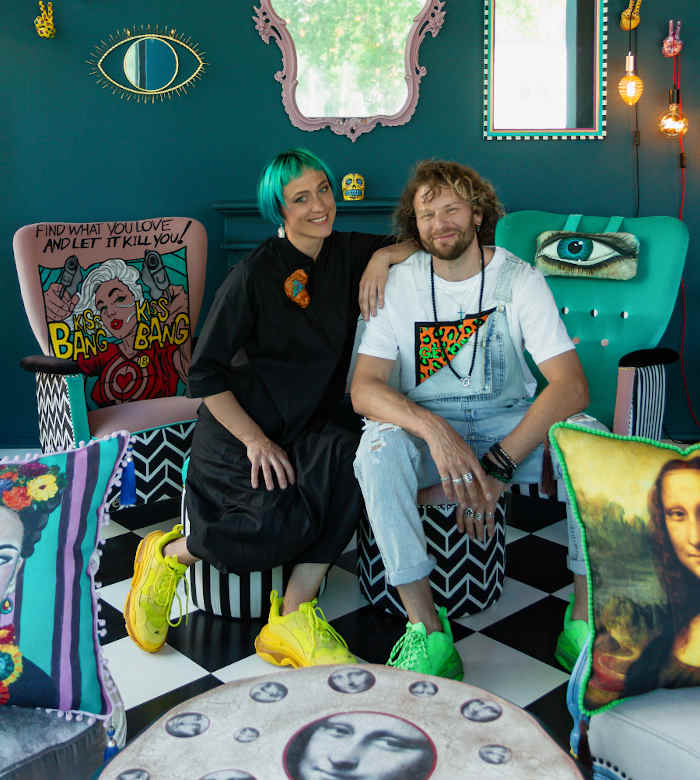 – It is believed that natural materials are not very convenient for use – for example, that paints fade quickly …
– It is believed that natural materials are not very convenient for use – for example, that paints fade quickly …
– Actually, it’s not like that. The paints need fixing, and of course, the coating is UV protected so that it does not fade.
We paint everything with them: wood, fabrics, and even the floor in the salon. And they fit perfectly: you can even paint on metal and glass. If you paint furniture with ordinary paints, you need to sand and grind but here you apply them without pretreatment – they have a very strong adhesion to the surface. Another advantage is that you can work without gloves – if you get your hands dirty, you can just wash them as usual.
Mass production, by the way, uses very cheap and at the same time impractical materials. For example, fabrics with low wear resistance – it is shown by the Martindale number. The penny saved is a penny gained is the principle. It gets to the point of ridiculousness: if one more screw is used in a design, it turns into drama. The Chinese can even make furniture frames from pressed paper. IKEA, by the way, has recently switched to wood, they now have only one table for €5 that is made of pressed paper.
Hardcore Swedish minimalism
– Natalia, you are an interior designer by education, why did you suddenly change your profession?
– Yes, I had worked with interiors for 15 years, also in Sweden, in one of the coolest Swedish architectural firms, it was one of the top three companies. But all the same, the clients dictated to you what they wanted.
– And the Scandinavian style is more restrained?
– Yes, especially among Swedes. Everything is very hardcore with them: there are certain firms that a bureau would work with – and you cannot go beyond the framework. I proposed different ideas to them, they responded: everything is cool, I like everything, but … we can’t do that.
In Estonia, where I started, it was more fun: here I got to work with a very cool English architect. The British love color purple in particular and everything bright in general – they are a royal country. And this, of course, gave me a first strong start.
But anyway, when you do a project for a customer, they are usually afraid of going beyond what is generally accepted. And as a result, you are deprived of all the energy and the desire to create.
And so it happened that in the end I entered a restoration course. I thought to myself: since childhood I always wanted to do something with my hands. And the teacher told me almost from the first class: it feels like you’ve always been doing this. I was very glad to hear that although it seemed to me that nothing was working out for me.
And I understood that I can put all my creativity into this. I come to my workshop, listening to no one while doing what I like, immersing myself in the process – it’s like a meditation. At these moments, I am absolutely happy.
Say, I made an interior item, someone likes it – they buy it. If they don’t like it – they don’t buy. And I am not forced to do what I do not want to do.
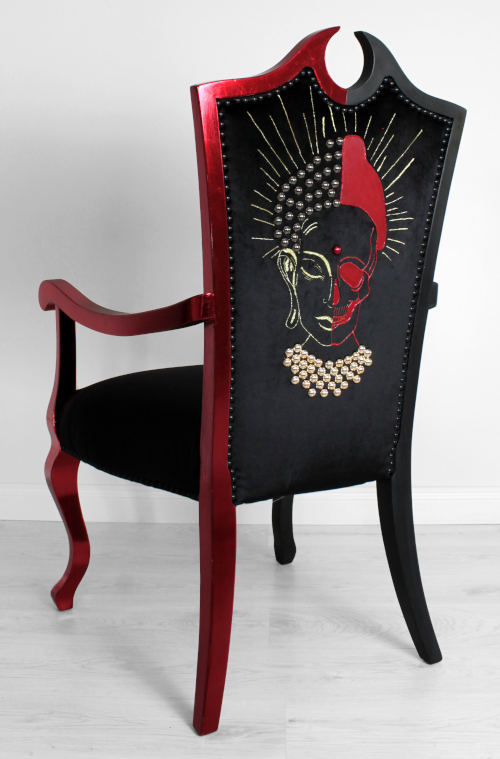
And people do come to our salon and also find inspiration!
Bright France and England
– Well, and how does one decorate a bright interior in one’s own home?
– From experience I can say: when you try to follow trends, it turns out not very well in the end.
When you can completely switch off the head with all its thoughts about what is in fashion now and do what actually meets your inner needs, then it will turn out one hundred percent.
For example, sometimes people come to us and buy everything at once to decorate their interior.
– That is to say not just spots but everything bright-bright?
– Well, you see: here everything is bright-bright and at the same time everything is in perfect harmony.
Yes, many are afraid of it believing there should be only one bright detail in all interior. You can, of course, do like that: if you have
a minimalist interior and you want to add single art object to it.
But if you take the interiors of France and England for instance – everything is bright there. The walls are brightly colored, the furniture is colored, everything is so saturated. And has been this from time immemorial.
By the way, take Sweden, the Swedes are wealthier – they are a different class and a completely different story: they love Joseph Frank. His designs remind, for example, of the Finnish Marimekko: very bright prints – flowers, flying butterflies and birds. And the Swedes get armchairs, sofas with this upholstery. But a meter of fabric with such a print costs anywhere from €150. For an armchair, say, you would need 4 meters of fabric …
When one has money, the person starts visiting theaters, museums, traveling the world, and one starts desiring not soullessly average furniture around but something special, unique, hand-made. Estonia is getting this type of customer now.
It’s like with designer dresses. You wear them differently. You feel cool and comfortable in it, don’t you?
Your nest or your castle
– And yet, how does one organize the interior of an apartment? What should be the starting point?
– I’d recommend you to decorate the interior not in accordance with the new trends but with your comfort. In a trend – take for example, the loft-style that is so fashionable today? Yes, it will suit someone, but women don’t usually thrive in an industrial style, they prefer coziness. So you may have done trendy but you come home and feel depressed.
So listen to yourself – what do you, the beloved and the best one, want. So you need such a design that you come home and you feel well: you are in your nest or in your castle. So in short, the most correct trend is to listen to yourself. And then you can get in touch with a designer on how to implement it. Or look to magazines and design sites for a kick start.


Natalia Eljas is inspired by
Jimmie Martin, a British brand of two bright and well-known designers: an interior designer and an artist who hand-paints furniture. One is responsible for the designs, the other integrates art objects into them.
Yayoi Kusama, the legendary Japanese artist, her crazy bright designs are known all over the world.
A designer and restorer’s furniture care tips
If the wood furniture is covered with wax, a new coat of wax can be applied once a year. It immediately fastens after you apply it.
Relatively recently, a new product for upholstery of furniture has appeared. It was originally made for motocross: an impregnation for clothing that repels dirt preventing it from penetrating into fibers. Swedes came up with an idea of applying that to furniture: you vacuum your furniture – spray it from the can – wait for it to dry – and use like new for another year. If you suddenly happen to spill red wine, just rinse it off with water.

